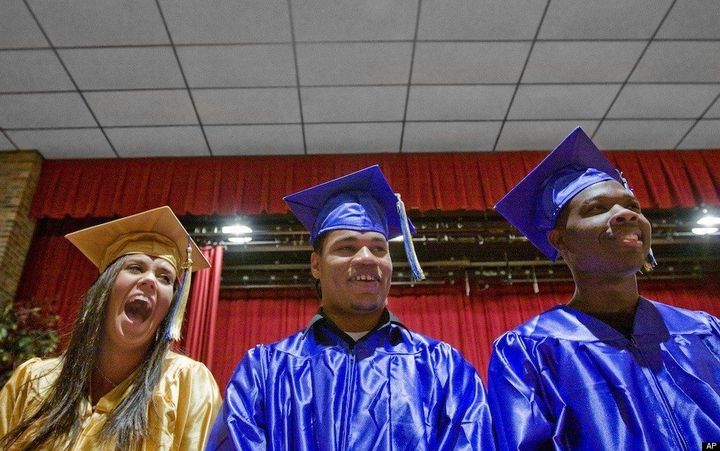
In the current coverage and conversations about education reform, one stepchild remains in the room -- continuation education.
Even when given appropriate funding, great teachers and high standards, not every child flourishes in a traditional classroom or school. Some are at-risk due to poverty, poor health, abuse, pregnancy or some other issue. Others are simply bored and do not understand education is relevant. This is when continuation education is most vital.
Continuation education is a high school diploma program designed to meet the needs of students at least 16 years of age who have not graduated, are not exempt from compulsory attendance, and are deemed at risk of not completing their degree. Students in continuation education often lack credits or need a flexible schedule because of employment or family obligations. Offering an alternative path for earning a diploma can mean the difference between graduating and dropping out.
The importance of a diploma can be measured with wage analysis -- other measurements may be more difficult to quantify but also take a significant toll on our youth and finances. According to 2005 Census Bureau data the median family income of adults who dropped out of high school was $15,700 less than adults with a high school degree, and more than $35,000 less than those with a two-year degree. Over a 45-year career the earnings difference between a dropout and a high school graduate can amount to more than $700,000. A Brookings report noted, "Considered from a broader social perspective, this income-education pattern shows that dropouts contribute substantially to the problem of income inequality."
We can address this inequality if we provide paths that allow students to thrive. More than 4,800 continuation schools are scattered across the country. It's time to talk about the classroom of the future -- many of which are found in these schools and provide an alternative path to adulthood. Options and opportunities already exist.
Educational expert Thomas Frey envisions an educational future where economically accessible coursework is available to anyone at anytime, and that education will progress from being teacher-centric to learning-centric, as well as more individualized courses and a move from classroom based learning to anyplace, anytime learning. We already see this shift in continuation education in the advancement of evening schools, online coursework and work-study.
The critical role of continuation education demands its inclusion in the current reform conversation. The problems associated with dropouts include high unemployment, poverty, government dependence, and high incarceration rates. The Center for Labor Market Studies at Northeastern University found that the incarceration rates of young males are found to vary considerably with their educational attainment. Nearly one of every 10 young male high school dropouts was institutionalized on a given day in 2006-2007. This can be compared to one of 33 high school graduates, one of 100 of out-of-school young men who completed one to three years of post-secondary schooling, and only one of 500 men who held a bachelor's degree. The Northeastern researchers concluded the average high school dropout will cost taxpayers over $292,000 in lower tax revenues, higher cash and in-kind transfer costs, and imposed incarceration costs relative to an average high school graduate.
Dropouts are a major fiscal burden while we struggle to put our economy back on track. With the current and projected deficits of the federal and state governments, the financial burden of supporting dropouts is unsustainable. It is high time to redeploy and ramp up the resources to fight the dropout tide and support continuation education.
In Massachusetts, Project Coffee (Co-Operative Federation for Educational Experience) has been in operation for 30 years and hundreds of students have graduated from this alternative middle and high school. Its students have faced judges, had serious drug problems, or missed school because they were in jail. Some have been homeless and still others the victims of abuse. This model is one example of connecting the dots. The school offers small academic and occupational instruction as students work in a hands-on mode gaining real skills. This is an introduction to the world of work and the students find the work has relevance to their future.
Educational justice leaders and education practitioners have an important role to play in lifting up our youth so that they, and our country can achieve the promise and potential of our democracy. Our leaders must make sure the policies and resources are in place to help them do so through a strong and relevant continuation education system. It deserves a high priority in the current educational reform movement.